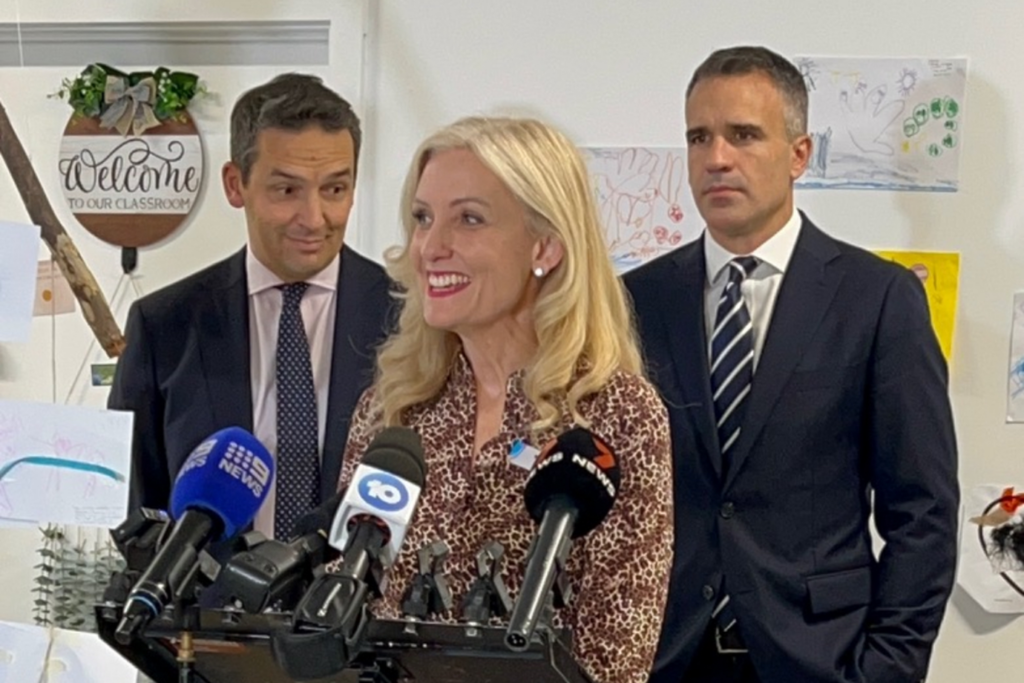One of the most reassuring things about working with young children is they crack open the hardest heart. My mum used to say watching people interact with babies gave her hope for humanity. The crustiest cynic is peek-a-boo-ing in moments.
We see the future in those little faces, and it makes us want to do better.
While this protective, human part of us wants great outcomes for our children, we’ve come to realise that with falling birth rates and productivity, we also need these outcomes, as a nation.
So how is it a quarter of our children hit the age of five developmentally behind, without the early language, emotional, or physical skills to get what they need when they start school?
The data is in – high-quality early learning sets a child up for lifelong success. The data also says most early education services and educators do a great job.
So we are heartbroken by recent reports that some unscrupulous providers are letting children down.
But these breaches of trust serve as timely reminders. Of what it actually takes to deliver safe, high quality, life-transforming early education.
It’s not enough to open centres and give parents fee relief.
Goodstart is Australia’s largest provider of early learning and we spend every dollar we earn ONLY to improve children’s outcomes. We have one of the nation’s best quality records, but we work every day to get better and to influence the whole system to get better too.
And we welcome the blowtorch of community scrutiny activated by these latest reports. It shines a light on areas where we all need to do more.
For me, two clear actions emerge.
Firstly, more oversight is needed to ensure providers consistently deliver the highest quality. Some states have six different regulators and enforcers trying to work together to keep children safe.
At Goodstart, we operate in every state, so we see the problems that result. For example, we have seen cases where people who should not work with children fall through regulatory gaps, and it is only our vigilance that stops them being re-employed.
In some states, services don’t receive quality assessment visits for four years, even if they failed the quality assessment the first time!
We need a national commission, and it needs to focus not on playing an ongoing game of whack-a-mole with dodgy providers, but on the drivers of quality and safety.
As a starting point, it needs to focus on who is allowed to operate a service, and where.
Governments have started to think more about areas of undersupply – the child care ‘deserts’. But almost no-one is thinking about those areas where lots of new centres are opening up because there is high demand and money to be made. Most of these services are run by big businesses, and many go years without having their quality checked by anyone.
A national commission also needs to think about workforce. Parents know the most important part of a high quality service is having enough well-trained educators. Who stick around.
Long-term solutions to address supply and workforce have to be central to regulating quality and safety.
Only a national commission can deliver this stewardship.
Secondly, while we’ve heard lots of opinions about how to provide universal child care, the troubling safety cases we have seen recently point us to the real question: universal what?
It doesn’t matter how universal early learning is if it’s poor quality. Or simply not safe.
As tempting as simple policy solutions seem, experience has taught me you need to first spend time properly understanding where you want to go – and what’s stopping you getting there.
A stitch in time saves nine (another one from mum).
Of all the PM’s nation-shaping early childhood announcements, one small, not-very-sexy measure has received little attention: the unimpressively named Service Delivery Price Project.
It’s designed to have a proper look at what early learning costs and how we get better.
The most important contribution this work could make is to first consider what we want for our very youngest children.
The kind of quality that will help less of our children start school developmentally vulnerable? Tick.
Affordability? Tick. (Especially for those families who can’t access any early learning because of even very small out of pocket costs. Their children are disproportionately represented among those 25 per cent who start school behind).
A guarantee of safety for our youngest Australians? One hundred ticks.
Let’s start with the end in mind. Before we move to solutions.
At the moment, children’s quality and access to early education depends on the state they live in.
Historically, states have been funded to support preschoolers, and the Commonwealth funds younger children.
This bureaucratic convenience hasn’t worked for children, nor for the families who work to support them. It’s meant parents roping together different forms of care to make the dollars work.
The single greatest revolution would be to consider an optimal journey from birth through to primary school for children and, importantly, families – the provision, the quality, the safety protections.
Then we can decide how to fund it.
Based not on bureaucratic pragmatism, or historic deals between states and the Commonwealth. But on what will open the doors of school and life for our children.
And the doors of productivity for our nation.
This is the real hope of all of us who want better outcomes for our children. Because what we really believe in is the incredible power of universal early learning – done right – to change lives, and through those lives, to shape a strong, prosperous and caring nation.


